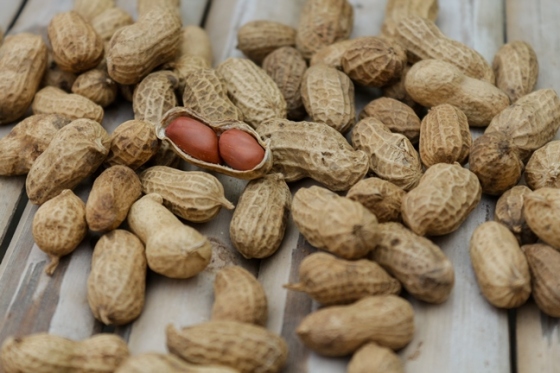A couple of weeks back, I wrote a post on how to write better: some basic tips on grammar, on punctuation, on dos and don’ts that help create a more polished manuscript. It drew a lot of attention, and several people, those who’re good writers themselves, as well as those who aspire to write, commented on it. So, here goes (you gave me an inch, I’m taking an ell): some more tips, this time on writing non-fiction, though some of these can also apply to fiction.
Understand your target audience. This is what I had in mind when I wrote the previous sentence, about some of these tips applying to fiction, or other forms of writing, as well. Ask yourself some basic questions: whom are you writing for? Who are the people most likely to read your book? What ages will they be? What will be their likely level of interest in this subject? How educated will they be? The answers to all of these will help you decide what you should write, and how you should write.
As an example: a year or so back, I was asked to write an article on food (I was given the freedom to choose what, specifically, I’d write about) for an upcoming culinary magazine. “It’s an industry magazine,” said the editor who approached me, “for hospitality professionals, especially senior people.” That helped me create an image of the person who’d likely to be reading my article: interested in food, knowledgeable about food and trends in gastronomy. Not a lay person, for whom a lot of things would have to be spelled out, or to whom anything highly technical might be anathema.
(I’m going to carry forward this example in the course of this post, so bear with me).
Do your research. Whether you’re interviewing people, digging through archives, reading books and online articles, whatever—make sure your research is good. Good, solid research is essential for fiction as well, but slipping up with the facts in fiction is less likely to get you marked as someone who doesn’t know what they’re talking about. Do that in non-fiction, and you lose a good chunk (if not all) of your credibility.
A note of caution: Wikipedia is not a good source of information if you’re doing research. Many of the ‘facts’ are opinions, hearsay, urban legend, or otherwise closer to fiction than fact. At the most, you can use Wikipedia as a means to get a basic idea of what you need to look for. If you are going to rely on the Internet for research (and why not, given the many digital resources that are now online?), use Google Scholar or Google Books instead.
Open up. By which I mean, cultivate interests outside your core competence. Most of us tend to have one or two fields that we’re specially, professionally, qualified for; sticking just to that amounts to restricting yourself. I don’t mean that everybody should aim to be a Renaissance Man (or Woman): just that opening up to the world around you, taking an interest in new things, can help in unexpected ways. Science, for instance, owes several of its inventions, from Velcro to the distinctive nose of the Shinkansen bullet train, to inventors who noticed something in the world of nature.
Look around you; even if you’re writing something very specific to one field, you may just end up finding something interesting from another field that has an impact on your own. Cinema, books, nature, art, music, travel: these are just some of the areas from which you can draw inspiration to…
… Build a story. Some of the most gripping stories I’ve come across have been in books that weren’t fiction. It’s true: life is stranger than fiction, and just because you’re writing non-fiction, it doesn’t have to be dry fact all the way. Note: I mention dry fact; facts can be made immensely interesting, too. Look at the way Bill Bryson writes most of his books. His A Short History of Nearly Everything, for instance, is a delightful exploration of science—of everything from the Big Bang to dinosaurs, quantum theory, and much, much more: even I, a science dud, loved that book.
Or read Raymond Sokolov’s Why We Eat What We Eat: How Columbus Changed the Way the World Eats; Paul de Kruif’s Microbe Hunters; Colour-Sergeant Kailash Limbu’s Gurkha: Better to Die Than Live a Coward—My Life in the Gurkhas; Steven D Levitt and Stephen J Dudbner’s Freakonomics: A Rogue Economist Explores the Hidden Side of Everything; and just about any of Gerald Durrell’s memoirs of his life with animals. All very different books, with subjects ranging from history to military life, economics and business to food, science, wildlife—and yet all so brilliantly written that they speak to even those who know next to nothing of the subject.
The key is to build a story, and two of the most effective ways of doing this are:
- Use the personal touch. What makes Gerald Durrell’s books (as an example) so endearing is that they have a lot of him in them. He is a part of his books; you read about his experiences, his insights, his thoughts, his emotions. And the way he writes takes away from any sort of egotism: the impression you are left with is of somebody who’s deeply interested in, and committed to, what he’s writing about. When you’re passionate about your subject and involved in it, allow that enthusiasm to shine through by using the first person narrative form.
- Build in trivia. I remember reading in Alok Jha’s The Water Book about how a Tanzanian schoolboy, in the midst of a cookery class, hurried to get his ice cream ready by putting the milk mixture in the freezer while it was still hot—and found that it froze faster than the cooled mixture put in by his classmates. Named after the boy, the Mpemba Effect explains why (under some circumstances) hot water freezes faster than cold. I am, as I mentioned earlier, a dud when it comes to science, but an interesting little story like that stuck with me.
Go easy on the jargon. One grouse I have with much writing by people who are either academicians or otherwise in highly specialized fields (the corporate world has many of these) is that it’s often loaded with jargon or academic-speak. Granted, some of this is essential; there are certain technical terms that cannot be replaced with another effectively. Look at this excerpt, for instance, from an article about the conservation of Delhi’s cultural heritage: “… [The project] was propounded to exorcise such entrenched shibboleths against the cause of conservation in general and conserving urban heritage in particular. In the process it hoped to demonstrate that by pursuing the imperatives of conservation the current unsustainable urban planning practices could be transformed to more appropriate, content-specific sustainable strategies…”
The problem with writing like this is that unless the reader is required to read and understand all of it, chances are that it will soon make their eyes glaze over and their mind wander. Use a simple word if you can find it. Convey no more than one idea in a sentence (or two closely linked ideas, if one idea is too simplistic).
Create C, B and A lists. This will require some explaining, since it’s a concept not too many people are familiar with. In my very first year of employment, when I was a management trainee, one of our classes was on public speaking—and this was the technique taught on how to prepare a speech. It’s a method of homing in on the most salient points of whatever you need to speak about, and how to structure it. While public speaking isn’t something I do often, I’ve realized that this is also a great tool to help figure out what to write when you’re writing non-fiction.
To begin,
Make a C list. The C list consists of everything you can think about related to the topic you mean to write about. Sit down and think it over. Do a good deal of research, so you get to know other aspects of the subject (that is, if you’re not already an expert). Then write down every single thing you can think of, in a list, that has something to do with the subject. Jokes, tangential information, everything.
As an example, let me continue with the example I’d introduced earlier: the article I was writing for the culinary magazine. I decided to write about peanuts, so this is what my C list looked like:
Botanical introduction – legumes, not a ‘tree nut’; grow underground
Differences between tree nuts and peanuts
Historical – origins, where found, how spread to other parts of the world
Cultivation, distribution, storage
Nutrition – sources of protein and fat, other vitamins and minerals
Allergies and health issues caused by peanuts
Trivia – known earlier as the ‘Goober pea’. Looked down upon, then the turnaround. Millions of jars of peanut butter consumed in the US every year.
“If you pay peanuts, you get monkeys” – racist?
Charles Schulz’s Peanuts
Peanuts in cookery – different forms (oil, butter, as kernels, both whole and crushed, roasted and raw). Different aspects, different flavours, including umami
Examples of uses in different recipes from across the world
Examples of recipes by famous chefs that use peanuts in both savoury and sweet dishes
As you can see, this is a very eclectic list. There’s stuff here (the history of peanuts, for example) on which an entire book could be written. On the other hand, there’s Peanuts, Charles Schulz’s iconic comic strip about children and a dog, which has really nothing to do with peanuts, really.
But you get the idea: this is a laundry list. Everything goes here. Even things that you don’t think have that much of a connection.
The next step?
Make a B list. This is where your knowledge of your target audience (and of other details that govern what you’ll write) comes in. I already knew that the people I’d be writing for would include fairly senior chefs, people who were professionals. Not botanists, not medical students, not historians, all of whom might be interested in specific points I’d mentioned in my C list, but chefs. Also, I had been told by the editor that my article had to fit into less than 1,800 words. If I began to write at length on even one of the points I’d got in my C list, I’d cross my word limit without getting anywhere close to what I needed to convey.
Therefore, I had to cull out all that would probably not be of prime interest to my target audience. History? Botany? Charles Schulz? An idiom? Details about cultivation, storage and distribution? Would the average chef be interested in that? Unlikely. So, having pruned my C list, I derived from it my B list:
Brief introduction: legumes, not tree nuts
Basic nutritional information
History: origins, how they spread to the rest of the world
Forms in which peanuts are used
Uses in cuisines across the world
Brief recipes/recipe ideas from major chefs
As you can see, I’ve cut out a lot of extraneous matter—the trivia, the tangential information, things that probably wouldn’t be of much interest to my target audience—and focused on what I absolutely must include in the article.
In essence, the B list helps you get closer to the heart of the matter: what really counts, what you should include. Next up (and this is going to be more or less the framework of the final article) is the A list.
Make an A list. Derived from the B list is the A list. Peanuts is a relatively restricted field, so by the time I had trimmed down my C list and formed a B list, I was pretty much down to the basics. But what if you had to write an article on a subject that was much more vast? Say, on fish? Or water? Or Hindi cinema in the 50s and 60s? In such cases, your C list might be so sprawling and immense, that even a B list might end up being still pretty long. An A list, then, is what is called for, which is a further culling of extras, a further honing of just what you want to include in your article.
However, sometimes (as in the case of my article on peanuts), the A list can be a means of deciding exactly what you want to say, how much you want to say. If you put a bit of thought into the position of each item on the list, it can even act as a first draft, so to say, of your article. As an example, here is what the A list of my peanuts article looked like:
Introduction to peanuts – uses in different cuisines across the world
Historicity and origin, how peanuts spread
Properties: nutritional, flavour-related, texture-related
Recipes from chefs
One important tip: do not get rid of your C list until your article is final. Even though C lists can be cumbersome and contain lots of non-essential items, some of these can be interesting enough to help add pep to your final article. For example, the trivia I marked in my C list (but which I left out of the B and A lists) ended up back in my final article, because it just fitted in. If you want to read the article (and no, it’s not exceptionally techie from a chef’s point of view; even if you’re just interested in food, you’ll understand this), click here.
Note that the creation of these lists is just a means to help you organize your thoughts. Don’t think of them as hidebound rules that must be followed. It may be that as you proceed, you find that something you’d dropped from the C list actually makes a lot of sense being in your final article, or that something that was at the top of your A list probably deserves no more than a passing mention. But, because you’ve spent enough time and energy going over your base material, understanding it and the requirements of what you’re writing, you will find it easier to write without rambling, without too many digressions, and (hopefully) without missing out anything important.
And, as always, when it comes to writing: when you’re done, review your work at least a couple of times. Make sure it’s error-free (when writing non-fiction, it’s also even more important to make sure that there aren’t any factual errors in what you write). Run a spelling and grammar check. Read it again. Ask yourself, “If I were so-and-so [whoever you envisage as a probable reader], would I find this interesting? Would I want to read further?”
Much of which, naturally, applies to fiction as well. I’ll talk about that in the next post I do on this series on writing.







You make a lot of good points here, Madhu. This series of posts is very, very interesting to me because, while I knew them – sort of instinctively – I’ve never consciously thought about it. These articles force me to do so. Thank you.
May I add one point? Please, after you finish your article, down to the editing, grammar, spelling, whatever, keep it aside for at least a couple of hours before you send it off. Then, read the article again with fresh eyes. Sometimes, you will notice that sentences/paragraphs that made sense where they were before, need to change their positioning in the article. Sometimes a whole paragraph may need to be split into two, and placed to bookend completely disparate paragraphs, above or below…
If you need to do that, please run your grammar and spell-check, and proof it once more. Sometimes, especially when you cut-and-paste, you might end up with duplicate sentences/words or even misspelled words because they tend to get truncated.
LikeLike
Thank you, Anu! And for adding that bit, though I have covered part of it in the penultimate paragraph.
(As an aside: an example of how a bad bit of writing – or something that’s written without any thought, any research – can leave a bad taste in the mouth. I was reading a story the other day. Set during 1856-57, in India. In one scene, a character thinks about how bad the British Empire has been for India, and the next moment, realizes that they haven’t been all bad, either, because of all the things they’ve brought to the country. Cinema included).
LikeLike
Cinema included
*Splutter*
LikeLike
Imagine.
LikeLike
Very very sensible tips. You have written them out so interestingly. You really have such a wonderful flair for writing.
LikeLike
You should see the big grin on my face, Ava! Thank you so much. :-) That really made my day.
LikeLiked by 1 person
Thank you for walking us through your writing process, Madhu. This goes on to show how important is the planning part. All of what you listed out is very useful. A lot of people blindly follow what’s in Wikipedia and you correctly pointed out that is a good source to get general information but not necessarily the authentic and verified infornation that you can rely on at all times. I really liked your explanation of how story telling style can make a non-fiction content very interesting for a generic audience to stay with you.
Thanks for sharing your insights on how to write interesting, mature and coherent content.
LikeLike
Thank you, Ashish. :-)
It’s rather scary, actually, to see the way people seem to depend upon Wikipedia and regard it as gospel truth. Okay, for a primary school project… maybe. But (and this I actually came across, in some articles I was editing for an organisation involved in heritage conservation – they were full of paragraphs copied and pasted from Wikipedia), not if you want to be considered at all credible. What with so many universities, museums, research institutes, and other highly specialized institutions putting so much of their knowledge up for free access on the Net, there’s no excuse to not utilize them. Sheer laziness and wanting to take shortcuts everywhere, I suppose.
LikeLike
“But, because you’ve spent enough time and energy going over your base material, understanding it and the requirements of what you’re writing, you will find it easier to write without rambling, without too many digressions, and (hopefully) without missing out anything important.”
Maybe, just may be, you have given me hope there. In case I do take up on this and yet become a hack of the worst order, let people know whom to blame!
Otherwise attagirl, way to go. The advice on one idea per sentence too is appreciated. I learnt it the hard way in my school days. We had to summarise an essay on “Education for new India ” by X. There was no way I could summarise it effectively because he had followed it to the hilt. I just did a mismash job but felt I had lost lot of salient information. ( Any guesses to the identity of X. A very prominent statesman i sall I would say)
As an aside I did post something to the aankhen thread something about it seemed like a deja vu as I had commented about “tere aankhen ke siwa” and “gulabi aankhen” and then doing a search for the former to find it in Madan mohan thread. The second I didn’t search but should have been somewhere else. This went into ether I suppose.
LikeLike
I am very curious about who X might be. A prominent statesman writing about ‘new India’? Nehru? Or am I completely barking up the wrong tree?
I think your aankhen comment did vanish inexplicably – because for the past few months, since the spam coming to my blog dropped to manageable levels, I actually scroll through all the spam comments just to check if something legitimate hasn’t landed up there (WordPress’s spam filter can be a little overly enthusiastic)… but no, nothing there.
LikeLike
You were close . Think of the other statesman who got into controversy with the very same policy (with caste also bandied about as reason for formulating the policy) – C Rajagopalachari.
Don’t worry it sometimes happens. Maybe the net connection plonked before transmission.
LikeLike
Ah. I should have thought of Rajagopalachari first.
LikeLike